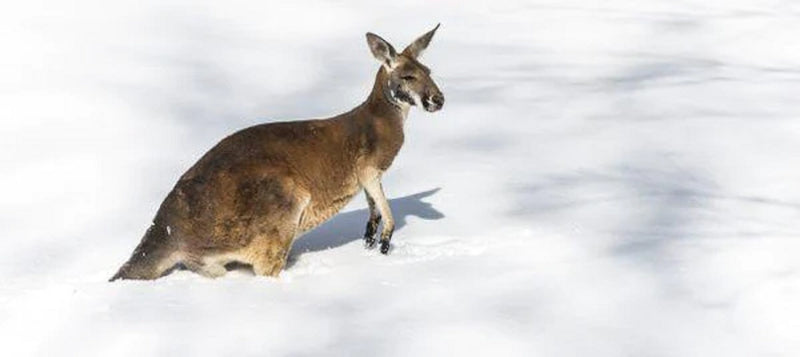Explore the Most Scenic Ski Resorts and Snowy Destinations for Snow In Australia
Discover the Remarkable Impacts of Snow in Australia on Neighborhood Ecological Communities
Despite its reputation for sun-soaked landscapes, Australia also flaunts regions blanketed by snow-- a sensation that greatly affects the nation's unique communities. The insulating residential properties of snowflakes protect plants and animals in the middle of the chilliest winters, while the melting snow supports rivers and marine life. Nevertheless, the actual marvel lies in how these chilly conditions form the country's biodiversity and nutrient cycles. As we untangle this elaborate partnership, we find ourselves stepping on unexplored grounds in Australia's high nation.
The Unexpected Regions of Snowfall in Australia
The high nation regions of New South Wales, Victoria, and Tasmania are particularly recognized for their winter snow. The Snowy Hills in NSW, for circumstances, receive abundant seasonal snow, offering a stark contrast to the nation's regular hot, arid environment. The presence of snow in these areas significantly influences neighborhood ecological communities, consequently impacting the country's unique biodiversity.

Just How Snow Impacts Australia's One-of-a-kind Vegetation
While it may seem unusual, snowfall in Australia plays a critical duty in shaping the country's unique flora. The snow-filled winter seasons foster durability in Australian plant species. This is especially noticeable in the alpine and sub-alpine areas, where snow gum tissues and hill plum-pines prosper. These plants have actually advanced to survive in extreme problems, with snow acting as a protective covering from extreme winds and freezing temperature levels. The snow likewise contributes to the moisture web content of the dirt, offering needed hydration for plant during the completely dry summer season. Fundamentally, the snow influences the timing of flowering and seed dispersal, the growth prices, and the survival of several plant types, showcasing the elaborate interplay in between environment and plants in Australia.

The Adjustments of Australian Animal to Snowfall
Simply as Australia's vegetation has actually adapted to the wintery problems, the neighborhood animals as well, show amazing adaptations to the snowfall. Variety like the Mountain Pygmy-possum, the only Australian marsupial understood to hibernate, have actually evolved methods to endure in snowy environments. It uses the snow as insulation, hibernating in rock holes basics beneath the snow to remain warm. In a similar way, the Snow Skink, a types of lizard, changes its colour to white during winter, supplying camouflage against predators. Birds such as the Snowy Mountains' Crimson Rosella likewise readjust their diet regimens to take in readily available food sources during cooler durations. Hence, despite the harsh problems, Australian animals shows a adaptive and resilient nature, ensuring their survival in areas experiencing snowfall.
The Role of Snow fit Regional Ecosystems
In forming the local environments, the role of snow in Australia is both multilayered and profound. Snow offers an important water source, feeding rivers and storage tanks as it melts, hence sustaining a range of water life types. The existence of snow shapes the vegetation patterns, pet habits, and total sustainability of Australia's special environments.

The Future of Snowfall in Australia: Ramifications and forecasts

Given the crucial duty snow plays fit neighborhood ecological communities, the future of snowfall in Australia is drawing raising focus from researchers and environmentalists. Existing climate versions forecast a considerable decline in snowfall as a result of worldwide warming, with potentially profound effects on neighborhood communities. Less snow can lead to reduced water availability in alpine regions, negatively affecting wildlife habitats and plant. Moreover, it could change the timing of seasonal adjustments, disrupting the life process of lots of native species. The tourism industry, heavily dependent on the winter months snow period, might also encounter considerable obstacles. Understanding these read forecasts and their implications is vital to develop effective preservation methods, guaranteeing the preservation of Australia's unique biodiversity and the sustainability of its economy.
Verdict
The role of snow in Australia's ecological communities is essential yet usually overlooked. Thus, the snow in Australia is a lot more than an all-natural spectacle; it's an important player in the country's environmental story.
Despite its credibility for sun-soaked landscapes, Australia additionally flaunts areas blanketed by snow-- a phenomenon that profoundly influences the nation's special environments. It utilizes the snow as insulation, hibernating in rock holes beneath the snow to remain warm - Does It Snow In Australia.In shaping the regional communities, the duty of snow in Australia is both profound and multilayered. The visibility of snow forms the vegetation patterns, animal behavior, and overall sustainability of click for source Australia's one-of-a-kind ecological communities
Given the important function snow plays in forming neighborhood ecosystems, the future of snowfall in Australia is drawing raising focus from environmentalists and scientists.